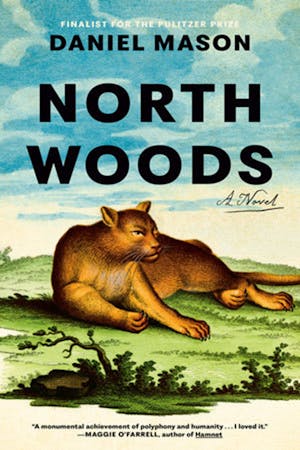
North Woods
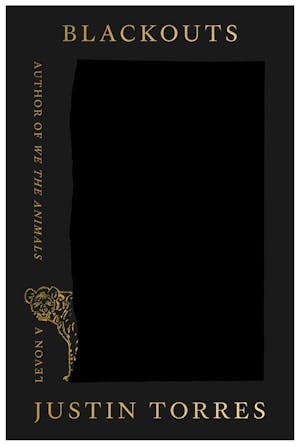
Blackouts
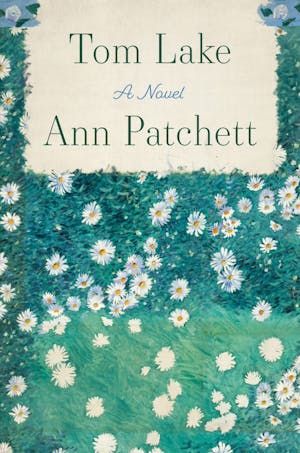
Tom Lake
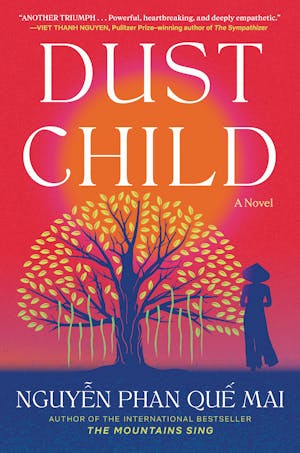
Dust Child
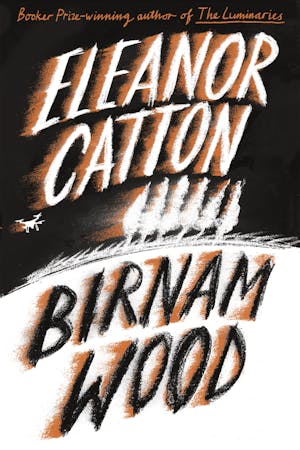
Birnam Wood
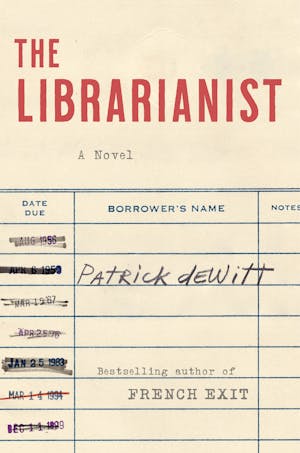
The Librarianist
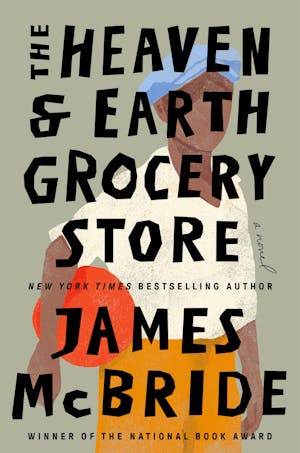
The Heaven & Earth Grocery Store
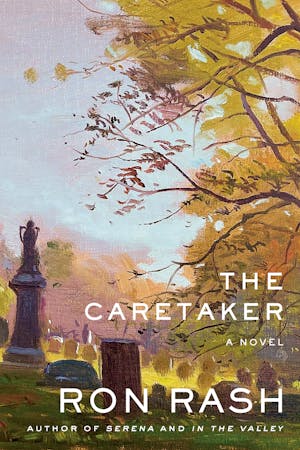
The Caretaker
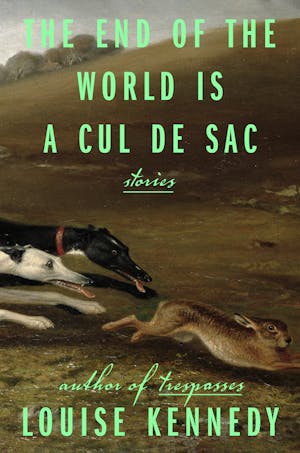
The End of the World is a Cul de Sac
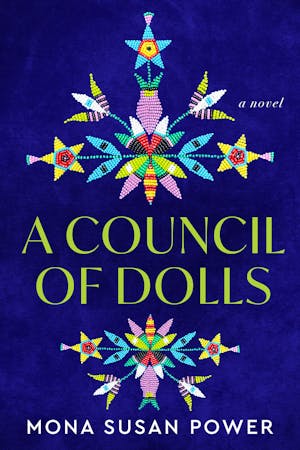
A Council of Dolls
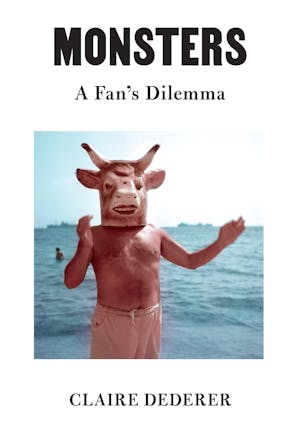
Monsters: A Fan's Dilemma
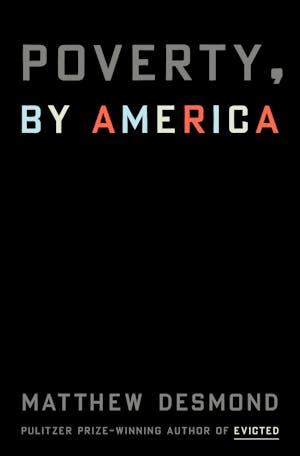
Poverty, by America
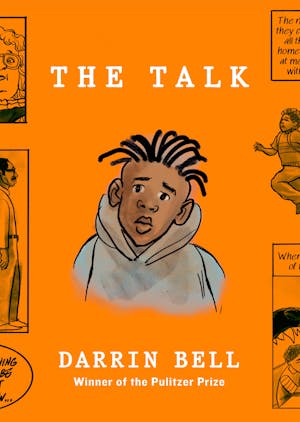
The Talk
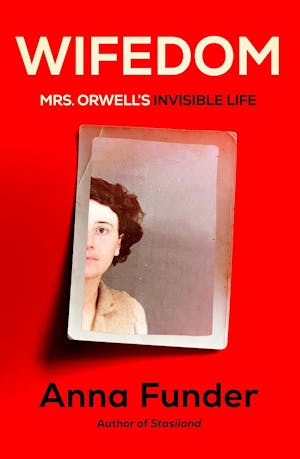
Wifedom
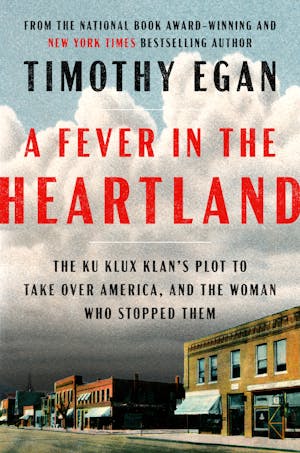
Fever in the Heartland
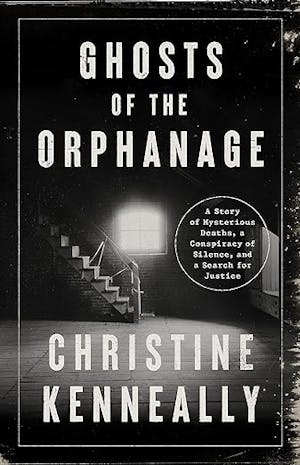
Ghosts of the Orphanage
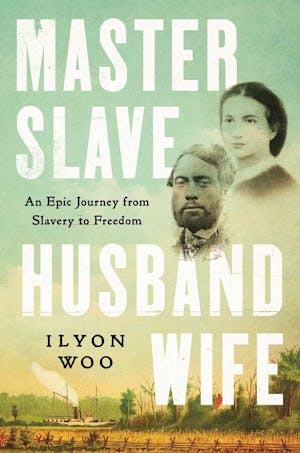
Master Slave Husband Wife
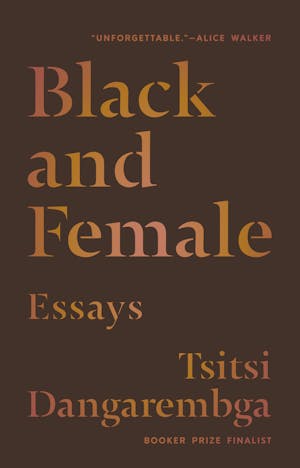
Black and Female

Fire Weather
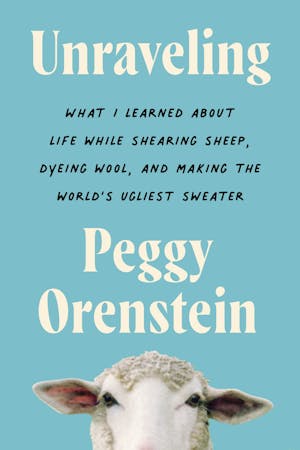
Unraveling
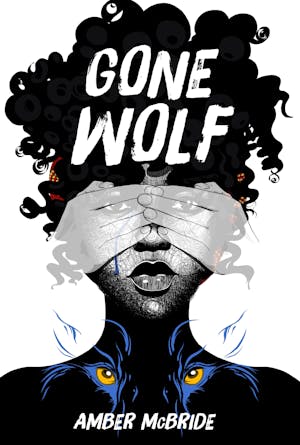
Gone Wolf
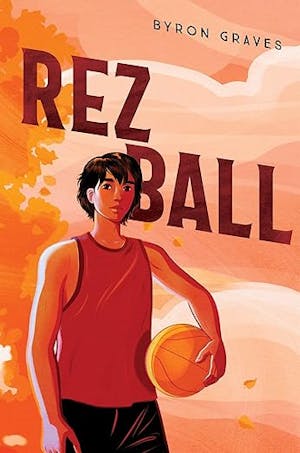
Rez Ball

The Siren, the Song and the Spy
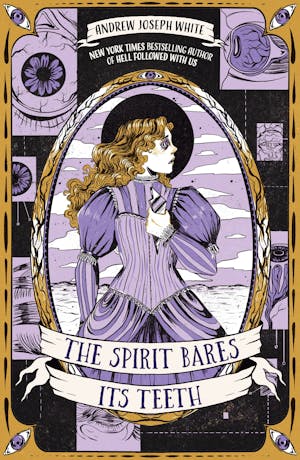
The Spirit Bares Its Teeth
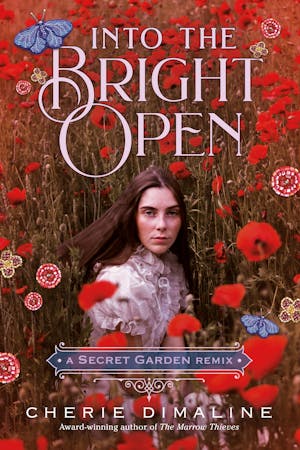
Into The Bright Open: A Secret Garden Remix
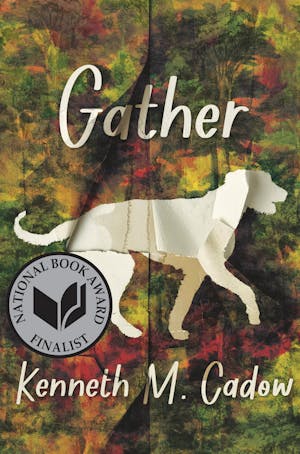
Gather

When We Become Ours: A YA Adoptee Anthology
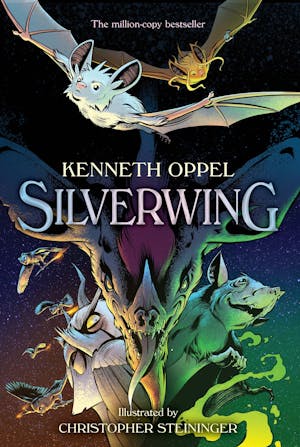
Silverwing: the Graphic Novel
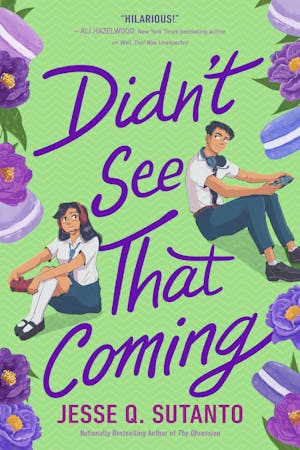
Didn't See That Coming
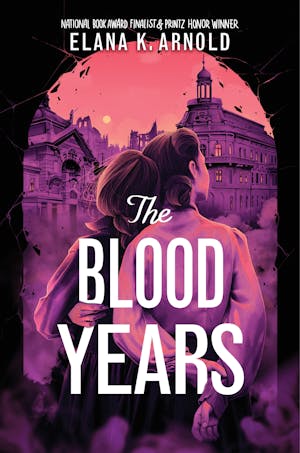
The Blood Years
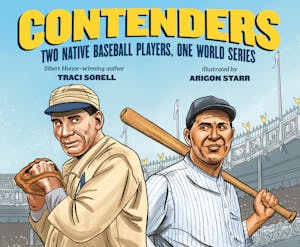
Contenders: Two Native Baseball Players, One World Series

Fraser the Forest Ranger
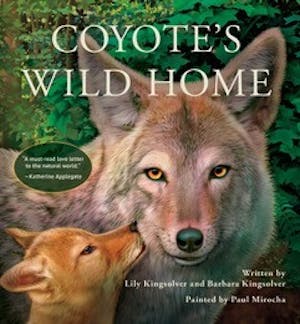
Coyote's Wild Home
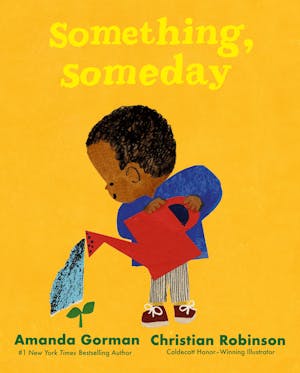
Something, Someday
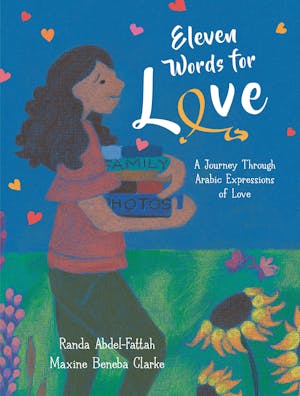
Eleven Words for Love: A Journey Through Arabic Expressions of Love
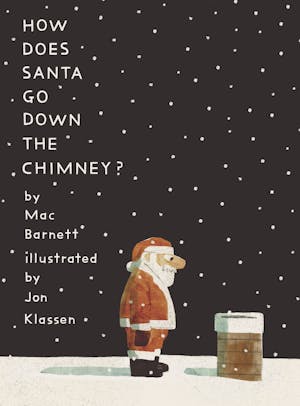
How Does Santa Go Down the Chimney?
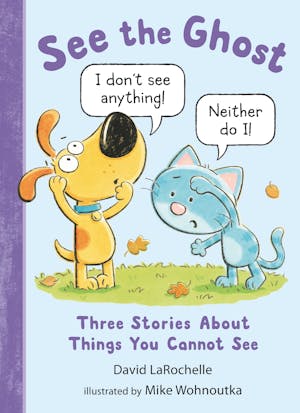
See the Ghost
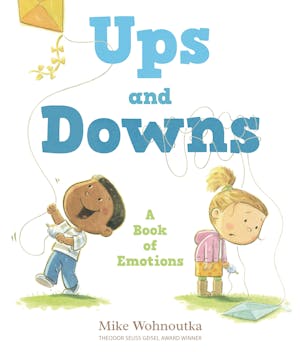
Ups and Downs: A Book of Emotions

If I Had a Polar Bear
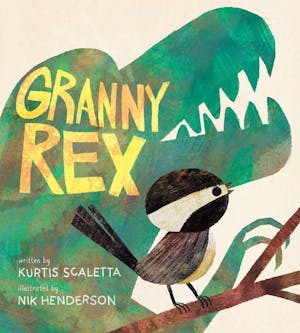
Granny Rex

North Woods
By Daniel Mason
It's a tight race between two contenders for the year's finest novels and both ("North Woods" and "Blackouts") are shape-shifty fictions that incorporate real events and people, that experiment with multiple narrative forms and that leave the reader dazzled by the writer's inventiveness and daring.
"North Woods" gets the edge because Mason — a 2021 Pulitzer Prize finalist for "A Registry of My Passage Upon the Earth" (he lost to Louise Erdrich) — is so successful at everything he attempts in a book about a house in the woods in New England. Over about three centuries, we meet successive residents of the house, who include land thieves, a murderer, a tree, apple farmers, a beetle, furtive lovers and a hard-boiled detective who thinks he's smarter than he is.
You could argue "North Woods" is more like linked stories than a novel (a beloved writer who shall remain nameless told me she didn't connect emotionally to the book because it doesn't spend enough time with any individual characters). But if you think about the house as a "Being There"/Chauncey Gardiner-like protagonist — seeing everything, judging no one, adapting to fit new tenants and circumstances — it's great fun to sit back and marvel at the narrative guises Mason assumes as he shifts "North Woods" from love letters to newspaper articles, songs, land tracts, poetry and a mystery story.
Mason starts with a couple who are young, in love and about to imagine their first home: "At the brook, he found a wide, flat stone, pried it from the earth and carried it back into the clearing, where he laid it gently in the soil. Here." By the end of the book, it feels like nothing less than the story of America.

Blackouts
By Justin Torres
Winner of the National Book Award, "Blackouts" is about two characters, one of whom doesn't have a name. He's a hustler and he's taking care of Juan Gay, a dying friend he met while both were in a psychiatric hospital. Mostly, they tell each other stories in Torres' Gothic novel, which echoes Manuel Puig, Tennessee Williams and maybe Daphne du Maurier (opening line "I came to the Palace because the man I sought kept a room there" made me think of "Rebecca"). But Torres' follow-up to "We the Animals" feels like something brand-new (oh, it's also heavily illustrated with sometimes-graphic photos and drawings). In his review for the Star Tribune, Hamilton Cain called it the year's sexiest novel, a "tour de force" that's "brimming with queer history, racial defiance and the injustices of the Freudian era."

Tom Lake
By Ann Patchett
When I reviewed Patchett's latest, I suggested that it was going to stay with me for a long time. I was right. I'm still thinking about the novel about a woman who runs a Michigan cherry farm with her husband. During the pandemic (although it's not really a pandemic novel), their three adult daughters return home to isolate and help harvest the cherries. Like the fruit, the book covers territory both sweet and tart. As Lara tells her kids the story of a long-ago love affair with an actor who subsequently became famous, the family members grapple with what they want from life and whether they're on track to get it. Each daughter has a different response to their mother's stories (one sometimes wishes the actor were her father) and each realizes they're in the privileged position of being able to chart their futures, with a little help from the past.

Dust Child
By Nguyễn Phan Quế Mai
Alice McDermott has received tons of praise for this year's "Absolution," which looks at the early days of the Vietnam War through the eyes of women whose husbands were stationed there as diplomats. But an even better look behind the scenes of Vietnam is Nguyễn Phan Quế Mai's novel. It's told from the perspectives of three people: a sex worker named Trang, a young man named Phong, who hopes that finding his American father will help him make a better life for his family, and Dan, an American soldier who returns to Vietnam to find the child and lover he left behind. The Star Tribune's Tom Horgen wrote that "Quế Mai's ability to plunge the reader into the perspective of a different character with each new chapter transforms 'Dust Child' into a page-turner."

Birnam Wood
By Eleanor Catton
Three young New Zealanders form a collective to do environmental good and fight capitalism. Speaking of capitalism, an American billionaire becomes intrigued by the work the collective is doing and offers to finance their efforts. But is his interest legit? (The fact that the novel's title comes from "Macbeth" might be a clue that it isn't.) The motives of everyone — also including a nobleman who's not so noble and his forthright wife — are questioned in this follow-up to "The Luminaries," which made Catton the youngest Booker Prize winner. Bad decisions pile up as Catton puts the squeeze on her flawed but compelling characters (it's much more complicated than "environmentalists = good/billionaires = bad"). Hamilton Cain wrote that the pulse-pounding literary thriller is "one of this year's most sophisticated, stylish, and searching works, a full-on triumph from a once-in-a-generation talent."

The Librarianist
By Patrick deWitt
Why aren't more people reading deWitt, who's like a slightly warped Anne Tyler? His five tender, deWitty (sorry, not sorry) novels have been adapted into two movies ("The Sisters Brothers," "French Exit") but, somehow, they haven't reached a wide audience. The Canadian's latest is about quirky Bob Comet, a librarian who prefers books to people. Most of the key events of Bob's life take place in libraries, including pivotal encounters with his estranged wife and probably-estranged best friend. In an extended flashback, we learn more about why Bob is so human-averse and how his love of books could help him get out of his own head, once and for all. When I reviewed the fast, funny book, I called it "bright and entertaining from beginning to end" and, having subsequently read it a second time, I stand by that.

The Heaven & Earth Grocery Store
By James McBride
The "Deacon King Kong" and "The Good Lord Bird" writer returns with another boisterous, tragicomic tale of community. This time, it's Pottstown, Pa., in 1972, when a skeleton is discovered at the bottom of a well. McBride takes his time telling us how it got there, starting with flashbacks to 1925, when white, Jewish and Black residents lived in harmony in Pottstown's Chicken Hill neighborhood. The memorable characters include gangsters, speakeasy proprietors, hapless rabbis and an intimidating cobbler. As a succession of new narrators picks up the story, McBride shows how people with one thing in common — poverty — figured out they were stronger if they stuck together. In her Star Tribune review, author Jenny Shank wrote that the acclaimed McBride once again "lives up to expectations, delivering an entertaining, meaningful story about the community formed when people take advantage of America's opportunities for cross-cultural connection."

The Caretaker
By Ron Rash
The tense opening scene features a soldier in the Korean War. It's a frigid night and Jacob can hear enemy soldiers creeping ever closer until he's in hand-to-hand combat with one on an icy lake, as it begins to crack beneath them. There's an emotional precariousness to the rest of the tale, which has to do with Jacob's wife, Naomi, back home in Appalachia. Jacob's wealthy family disowned him when he wed his impoverished bride so he has had to entrust her care to his best friend, Blackburn. One problem: Blackburn also loves Naomi. An even bigger problem: Jacob's parents will stop at nothing to split up Naomi and their son. Praising Rash's characterizations, Star Tribune reviewer Malcom Forbes wrote that "Caretaker" is "one of Rash's finest novels, impressing on multiple levels. Rash expertly toggles back and forth to reveal key developments at different moments in time."

The End of the World is a Cul de Sac
By Louise Kennedy
In his upcoming Star Tribune review of Kennedy's debut story collection, Cory Oldweiler praises the "Trespasses" author's lyrical language and deft character sketches. The stories in "End of the World" all deal with Irish women or girls who are haunted by bad choices or hard knocks: a woman whose brother murdered a man in the Troubles, a pregnant woman abandoned by her husband, a woman let down by both her husband and her lover, a hopeful mother taking her child to a speech therapist, a young "fiancée" trying to figure out how to tell the American woman she's taking on an impromptu tour of Ireland that the American's late son had not actually asked her to marry him. Many of the stories are bleak, but Oldweiler's lone complaint was that he'd like a whole book about some of the characters we only get to spend 20 pages with.

A Council of Dolls
By Mona Susan Power
Drifting between the past and present, Minneapolis-based Power's moving novel — long-listed for the National Book Award — tells the story of three Native American women and three dolls, revealing how the dolls, as Carol Memmott wrote in her review for the Star Tribune, "give comfort to generations of Indigenous women struggling to connect with their history and themselves." An enrolled member of the Standing Rock Sioux and a graduate of both Harvard and the Iowa Writers' Workshop, Power draws on her own family history in a novel that encompasses the kidnapping of Native children who were forced to attend boarding schools far from home, amid other forms of bigotry. There's an element of magic in "Council," whose characters speak to their dolls and believe they answer back, but its concerns are real-world. Memmott wrote that "the power of pushing back against racism and culture erasure gives this hypnotic novel's characters the strength to move forward."

Monsters: A Fan's Dilemma
By Claire Dederer
When magazine articles become books, too often the result is a work that soared at 5,000 words but feels padded and repetitive at 60,000. That's not the case with Dederer's thrilling collection, which grew out of an essay in Paris Review. The "dilemma"? What to do with work we love by people who do horrible things. In other words, is there any way to watch "Chinatown" without being disgusted by the behavior of director/actor Roman Polanski or to read "Lolita" without conflating its pedophile antihero with author Vladimir Nabokov? In chapters devoted to Polanski (whose "monstrousness," she writes, is as vast as the Grand Canyon), Woody Allen, Nabokov (whom she defends, definitively) and Pablo Picasso, Dederer addresses our ability to hold two competing ideas in our heads at the same time.
Dederer is especially good at examining how personal our responses are to art and to the transgressions of artists. Just as many people voted for Donald Trump despite unsavory things they knew about him (the "dilemma" that began Dederer on the path to her book), maybe some of us can enjoy Allen's "The Purple Rose of Cairo" without thinking about him (it's harder, of course, with a movie such as "Annie Hall," in which he appears as a version of himself). Nobody said it was going to be easy to make choices, whether in politics or trips to the multiplex.
The writer also looks in the mirror, examining her own failings as a human being and weighing them against those of art giants. Dederer lucidly lays out her conclusions in a provocative, wildly entertaining book that eschews definitive answers but asks one fascinating question after another.

Poverty, by America
By Matthew Desmond
Like "Monsters," it's a book that could alter the way you see the world. Desmond's follow-up to his trailblazing, Pulitzer Prize-winning "Evicted" (in which he embedded himself with Milwaukeeans with insecure housing) also takes a deep dive into poverty and injustice. It also doesn't pretend to be balanced. It reads almost like a passionate speech, urging us to dig deeper, to forget what we think we know as we try to understand the inequities upon which America was built. Citing movements such as Minneapolis' Inquilinxs Unidxs por Justicia (United Renters for Justice), Desmond asks us all to become "poverty abolitionists" and to recognize that when those of us who are keeping our heads above water encounter someone who isn't, those circumstances are related. He also lays out a plan he says would "fix" poverty in America, which makes "Poverty, by America" a surprisingly hopeful work.

The Talk
By Darrin Bell
Pulitzer Prize-winning editorial cartoonist Bell's book is a memoir in the form of a graphic novel. As he begins contemplating giving "the talk" (about how to navigate encounters with police) to his son, Bell reflects on his own youth — when, because his Black father was out of the picture, his white mom had to give him "the talk." Bell also looks back at the journey — romantic, embarrassing, scary, inspiring — that drove him from childhood in Los Angeles to creating a daily newspaper comic strip and other cartoons for the New Yorker and elsewhere. Each page of the lively, handsome book (which Bell created digitally, rather than with pen and paper) contains something vivid or funny or heartbreaking — often all three. In his Star Tribune review, Chris Barsanti wrote that the bittersweet book "minimizes overt commentary, making satiric jabs, instead, with brevity, wit, insight and humanity."

Wifedom
By Anna Funder
Essayist Funder had long been a fan of "Animal Farm" writer George Orwell but when she began to examine his life and work, she had some questions. Why, for instance, did he never mention his wife by name when he covered the Spanish Civil War, although she typed and edited his notes, faced more danger than he did and arguably did more valuable work? The more Funder looked into the relationship between George and Eileen Orwell, the more she saw Eileen's uncredited role in her husband's accomplishments. Funder's bold, bracing book blends nonfiction with novelistic passages (clearly delineated) in which she imagines Eileen's activities, as well as a sort-of memoir, in which Funder questions the idea of "the woman behind the man." Her conclusion? "Wifedom is a wicked magic trick we have learned to play on ourselves. I want to expose how it is done and so take its wicked, tricking power away."

Fever in the Heartland
By Timothy Egan
Who knew Indiana was a hotbed of the Ku Klux Klan — and white supremacy — in the 1920s? D.C. Stephenson is the vile antihero of this provocative history by Egan, whose other books include "The Worst Hard Time." Texan Stephenson's goalposts included becoming a KKK Grand Dragon, turning his adopted state of Indiana into the one with the highest per-capita KKK membership, planning a run for president of the United States — oh, and almost getting away with murder. His victim was the book's other main character, Madge Oberholtzer, whose brief relationship with Stephenson ended with her tragic demise. Egan's book is filled with astonishing and entertaining details (women in the KKK used cones under their hoods to protect their hairdos) but its story — a warning about the horrors that result when we fall under the spell of a demagogue — is a sobering one.

Ghosts of the Orphanage
By Christine Kenneally
"A damning book, from start to finish," is how former Star Tribune books editor Laurie Hertzel summed up "Ghosts" in her review. Kenneally's focus is St. Joseph's Orphanage in Vermont, which she describes as "a factory of pain," but her tale of the abuse and torture of children also includes Native boarding schools as well as children's homes in Ireland, Canada and Australia, most of them run by the Catholic Church. Kenneally combines exhaustive interviews with surviving nuns, some who were themselves victims of abuse (one observes, "We had permission to kick the children"), and their victims, who remain traumatized half a century after the events they describe. Hertzel wrote that Kenneally "chips away at the secrets, finding documentation and corroboration. The reportage in this book is impeccable. She never says more than she can prove, but she also never says less."

Master Slave Husband Wife
By Ilyon Woo
In the market for a true story that reads with the tension of a pulse-pounding thriller? How about this wouldn't-believe-it-except-every-word-is-true premise: Ellen and William Craft escape the Georgia plantation where they are enslaved in 1848. They make their way north — on trains, boats and carts — in disguise: Ellen (whose father also was her "owner") takes advantage of her light skin and pretends to be a white man, traveling with her attentive slave (William). Woo's fast-paced narrative follows them on 12 legs of their journey to freedom, hounded by slave catchers and their own occasional slip-ups. In a story that seems tailor-made for the movies, the Crafts eventually became advocates for emancipation and suffrage, and even reunited with long-lost family. Woo has said her goal is a "dramatic history that reads like a novel" and, in the spellbinding "Master, Slave," she manifested that.

Black and Female
By Tsitsi Dangarembga
"The force that propels my narrative through the damage is the hope not to be consumed, not to have my being rotted away, by the trauma," writes Dangarembga in her essay collection. "I write to raise mountains, hills, escarpments and rocky outcrops over the gouges in my history, my societies and their attendant spirits." The Zimbabwean writer's novel "Nervous Conditions" was cited by the BBC as one of the 100 books that most shaped our world. In her Star Tribune review of "Black and Female," Shannon Gibney called the essays "trenchant" for the way they grapple with the lingering effects of colonialism and explore efforts to achieve gender equity in Zimbabwe. Gibney wrote that she was moved by the essayist/playwright/filmmaker/novelist's reach across oceans to link her struggles with those of greats such as Audre Lorde, Paule Marshall and Toni Morrison.

Fire Weather
By John Vaillant
A roundup of books about famous fires led several readers to write to ask, "Have you read 'Fire Weather'? It's fantastic." Thanks, guys! Vaillant's National Book Award finalist comes in three parts. The first establishes the context for what he calls the most intense fire on Earth, ever. It was in 2016 in Alberta, and it was brought about by a perfect storm: a dry spring, high winds, leafless trees, short-sighted officials and denial. A forest fire quickly torched nearly the entire city of Fort McMurray, which becomes the book equivalent of a disaster movie in Vaillant's gripping second section. His reporting gifts are complemented by an imaginative ability to help us understand, for instance, how 19th-century beaver pelt traders were like Netflix and how a fiberglass bus shelter could melt like a milk bottle. Vaillant's spectacular book is also, unfortunately, an urgent one.

Unraveling
By Peggy Orenstein
"This witty, irreverent memoir is, at heart, extremely serious," wrote Laurie Hertzel of a book that might not sound like it is. Subtitled "What I Learned About Life While Shearing Sheep, Dyeing Wool and Making the World's Ugliest Sweater," it finds Orenstein facing multiple personal crises in the midst of the pandemic. Like many people, she responds by doing something with her hands. Unlike most of those people, she doesn't just knit a sweater but gathers her own wool and then cards and dyes it. The heavy (and not-as-ugly-as-she-claims) result is a sweater suitable only for when the Californian visits her father in Minnesota. But the point of the book is to talk about the environment, family and the work women do: "Making something from nothing is the quintessential magic of women, whether turning fiber to thread or flour to bread or engaging in the ultimate creative act: conjuring new humans from nowhere at all."

Gone Wolf
By Amber McBride
The searing social analysis of Toni Morrison's "The Bluest Eye" meets the suffocating terror of "Room" in this dystopian thriller from National Book Award finalist McBride.
In the year 2111, following a devastating pandemic and a second Civil War, the United States has split into a theocracy in the South (dubbed the "Bible Boot") and a democracy in the North and West.
Twelve-year-old Inmate Eleven lives in a tiny cell with only a genetically modified dog, Ira, for companionship. A dark-skinned "Blue" (enslaved person) in the Bible Boot, she's being raised as a genetic match to the president's white son. But Ira keeps threatening to "go wolf," and she keeps failing a Blue Doll test that requires her to see herself as inferior.
McBride slowly pulls back the curtain on a world that's both claustrophobic and brutal, from the constant medical tests Blues undergo, to the spirit- and body-breaking labor they perform when not serving Bible Boot's elites.
"Hate is illegal in the Bible Boot. Everyone lives peacefully" says one of the flashcards Eleven is forced to memorize. Others remind her she's ruled by the "best leader" under the "best laws" following the "best way."
The story shifts to Imogen in present-day Charlottesville, Va. A girl who feels too much and has survived traumatic losses during the pandemic, Imogen is afraid to leave her room and can't stop telling stories of a world split into a before and after.
"My story is about how hate can hurt," Imogen tells her therapist. But her uncontainable emotions also help her find a path forward as she connects with a college student with blue locs named Toni (one of many Morrison references) and her therapist, who has her own painful truths.
McBride has created a powerful parable that holds up a mirror to the horrors of slavery and the ways people become complicit — but can choose to resist — dehumanizing systems.
Reviewed by Trisha Collopy, Star Tribune

Rez Ball
By Byron Graves
This debut novel captures the "beautiful chaos" of run-and-gun basketball and the deep loyalty of a Minnesota community rooting for its team.
Growing up on the Red Lake Reservation, Tre has always lived in the shadow of his basketball star brother. But since a car crash ended Jaxon's life, his parents are stuck in their grief. When Tre wins a spot on Red Lake's varsity basketball team, he gains the grudging respect of a tight-knit group of players.
Graves captures the weight of a superstar brother, including how Tre is out of focus for his dad and uncles until he starts winning games. It also shows the casual racism that permeates Tre's life, from rivals using a tomahawk chop to a heart-stopping encounter with a white cop.
The heart of the novel is the games and the way Tre's friends look out for each other on an improbable championship run.
Reviewed by Trisha Collopy, Star Tribune

The Siren, the Song and the Spy
By Maggie Tokuda-Hall
In this sequel to "The Mermaid, the Witch and the Sea," Tokuda-Hall returns to a universe where the expanding, militaristic Nipran Empire is erasing pockets of resistance.
The tiny island community of Red Shore is home to the Wariuta, who guard the secret of an explosive compound called kau. When a girl in colonizer's clothing washes up on shore, the Wariuta leader spares her life, hoping she'll act as a translator. But hard on her heels are Imperial troops who unleash a massacre, forcing militaristic Kaia and her gentle brother Koa to flee. A Pirate Supreme and a grieving mermaid also play roles as a small band of resistance fighters pushes back against an overwhelming colonial force.
Threaded with unconventional women and peacemaker men, "Siren" imagines a world deeply imbued with Asian and Polynesian cultures, where kindness is as much of a weapon as kau.
Reviewed by Trisha Collopy, Star Tribune

The Spirit Bares Its Teeth
By Andrew Joseph White
In his second horror novel in two years, White takes us into a Victorian-inflected world where a small group of men accumulates enormous power with its chokehold on spirit-work.
Silas is a transgender boy with violet eyes and the ability to manipulate the veil between his world and the spirit world. But those identified at birth as female aren't allowed to practice as mediums; their only role is to marry and produce male heirs.
When Silas makes a public bid to seek a medium's seal, he's sent to Braxton's Finishing School and Sanatorium, where girls who test the rules keep coming to violent ends. As the headmaster puts him through a brutal re-education, he must navigate between those who are complicit and defeated, working to liberate the lost and traumatized souls around him.
A visceral, gory tale, "Spirit" lays bare the violence behind rigid gender norms.
Reviewed by Trisha Collopy, Star Tribune

Into The Bright Open: A Secret Garden Remix
By Cherie Dimaline
A beloved British classic gets a French, Indigenous twist in Dimaline's reimagining of "The Secret Garden."
Mary Craven, 15, has only known a world of parties and neglect until the sudden death of her parents. Shipped off to her uncle's manor in remote Georgian Bay, Ontario, she meets young Metis housekeeper Flora, who has little use for social hierarchy but offers genuine friendship.
Drawn by cries in the night, Mary discovers her cousin Olive, confined to the garret with a lingering sickness. She also stumbles on a neglected garden, which she begins to restore with help from Flora's tomboy sister Sophie. The return of Olive's stepmother puts all three girls in peril as she threatens to silence them to keep her grip on the household.
The story really shines when Dimaline offers glimpses into the Metis community — families rich in resilience and humor, who know their "place" is where they land.
Reviewed by Trisha Collopy, Star Tribune

Gather
By Kenneth M. Cadow
"Gramps always said farmers have to know how to do everything. Plumbing, propane, carpentry, mechanics, welding, electric. He said the only thing they couldn't know was how to make money."
Since the departure of Ian's dad, he and his mom have struggled to hold on to what's left of the family's land in rural Vermont. With his mom sinking into addiction and despair, he only has a stray dog, Gather, for companionship and his wits to help him put food on the table and stay under the radar of social services.
A whiz with machines, he's struggling at school until he meets Sylvia, who also feels like an outsider. As Ian looks for a job, he begins to gather a community of people who reach out when his life begins to skid.
This wandering but moving story of Ian's path to adulthood is full of humor and heart.
Reviewed by Trisha Collopy, Star Tribune

When We Become Ours: A YA Adoptee Anthology
edited by Shannon Gibney and Nicole Chung
Minnesota is home to some of the first voices speaking out on the challenges of transracial adoption. In this anthology, Twin Cities writers join a chorus of adoptees telling their stories.
In Gibney's "Oreo," Louie, a mixed-race teen adopted by a white family, struggles to feel "Black enough," joining the Black Student Union and diving deep into critical studies of race. Then she meets Nia, a sarcastic Black teen with a love of Russian literature, and the two find fellowship in nerd girl cred.
Sun Yung Shin takes a speculative approach in "The Dream Dealer's Audition" but hits a vulnerable note when Eleanor, who has a rare gift for dreaming, witnesses her adoptive mom's pregnancy and sees how that biological tie connects her new sister to the family.
"The only thing we needed was a forum. And each other. This is when we become ours," Gibney and Chung write in this much-needed space that amplifies adoptee voices.
Reviewed by Trisha Collopy, Star Tribune

Silverwing: the Graphic Novel
By Kenneth Oppel; illustrated by Christopher Steininger
A young bat's curiosity unleashes a war with owls in this action-packed but beautifully rendered adventure.
Shade has questions about the world, especially the sun, which other bats tell him is forbidden. He's also convinced that his father is still alive and that the mysterious metal bands on some bats mean something for their future. After Shade is caught out at dawn and the owls burn down his colony's roost, he begins a fraught journey south with another young bat, Marina, for company.
Soaring visuals give readers a bat's-eye view of the world — from their swooping flight to the use of echolocation to paint sound pictures. Those help Shade learn the colony's history, dance like his prey — the tiger moth — and memorize a map to help on his journey south.
"Silverwing" is a deep dive into another intelligence that may shift readers' view of the natural world.
Reviewed by Trisha Collopy, Star Tribune

Didn't See That Coming
By Jesse Q. Sutanto
Chinese Indonesian author Sutanto zigzags between comedy and sharp social observation in this sweet story of a girl gamer seeking belonging and love.
At the beginning of senior year, free-spirited Kiki Siregar is yanked from her progressive Jakarta school and sent to conservative Xingfa School, where she faces bullying that escalates when the principal blames her for the abuse. Meanwhile, she's trying to figure out the identity of her gamer buddy SourDawg, who doesn't know she's a girl — and may be sitting next to her in class.
Sutanto has plenty to say about cultural norms that give lip service to gender equality, even as boys are groomed for leadership and girls are pressured to remain silent. But it's the novel's side characters, Eleanor Roosevelt Tanuwijaya and Sarah Jessica Parker Susanti, cutthroat entrepreneurs who launch a dating app called Lil' Aunties, who provide hope — and much-needed comic relief.
Reviewed by Trisha Collopy, Star Tribune

The Blood Years
By Elana K. Arnold
New Holocaust stories are still surfacing, including those that look more closely at communities that resisted and the complicity of those who survived.
Arnold, who has written unflinching stories about the cost of sexuality for girls, excavates a lesser-known chapter of the Holocaust in Romania, focusing on Czernowitz, which was 40% Jewish before the war. Unlike some countries invaded by the Nazis, factions in Romania were eager to collaborate to ensure their survival.
The horrors creep up slowly at first for Frederieke and her older sister, Astra, who are protected by their grandfather, Opa, and Astra's husband, Marcel, who manages to keep his job at the Jewish hospital. But their world shrinks as their neighbors are brutally removed.
In the end, their survival comes down to luck, Frederieke realizes, as she tries to hold on to the spark of Opa's humanity in the face of the unspeakable.
Reviewed by Trisha Collopy, Star Tribune

Contenders: Two Native Baseball Players, One World Series
By Traci Sorell, illustrated by Arigon Starr
Two outstanding Native American baseball players faced each other in the 1911 World Series. Charles "Al" Bender, an Ojibwe, grew up on the White Earth Reservation in northern Minnesota. John Meyers, a Cahuilla, grew up in California. "Contenders" tells the true, inspiring story of their respective journeys from poverty and boarding schools to the big leagues of baseball. Sorell, winner of a Sibert Honor for "We Are Grateful: Otsaliheliga," a powerful book about the Ojibwe world vision, is an enrolled citizen of the Cherokee Nation. Starr, a member of the Kickapoo Tribe of Oklahoma, is a storyteller, artist and writer.
Together they bring their expertise to this serious and lovely book. It lays out the ups and downs — the victories, as well as the obstacles, primarily in the form of racism — that the two young ballplayers experienced. Bender was a pitcher for the Philadelphia Athletics who tossed the Series-winning game; Meyers was a catcher for the New York Giants (after a stint with the St. Paul Saints). The racism the two endured is shocking and unnerving to read today but was matter-of-fact for the time. In an article, the New York Times wrote, "Maybe they wished they had tomahawks in their hands instead of a bat and a baseball." Sorell's prose is straightforward and well-researched. Starr's hand-drawn and digital illustrations are realistic, inspired by photographs of the time and embellished with gorgeous borders of Cahuilla and Ojibwe designs. This is a riveting story and a sobering one, with historical context and sources at the end of the book along with a reminder that, "More than one hundred years later, Native athletes today still face these same challenges. Tomahawk chops and derogatory chants and signs can be seen and heard at stadiums and ballparks."
Reviewed by Laurie Hertzel, special to the Star Tribune

Fraser the Forest Ranger
By Matthew Schufman
Fraser the forest ranger lives alone in a cabin in the woods. He loves the woods. He loves his life. But he's lonely. "Fraser thought it might be nice to meet someone new." Maybe then he wouldn't have to play himself in checkers. Maybe then someone could help paddle his canoe. And so he sets out to find a friend. He explores the city — too unfriendly. He visits a beach — too hot. It isn't until he accidentally enters the wrong cabin, back in the woods, that he finds someone who is a lot like him. St. Paul author/illustrator Schufman has written a poignant tale of loneliness and friendship. His paint, paper and digital illustrations have a childlike feel, with flat perspective and backgrounds that look as though they were drawn with crayons. His message is sweet: Sometimes the thing you're looking for is right next door.
Reviewed by Laurie Hertzel, special to the Star Tribune

Coyote's Wild Home
By Lily Kingsolver and Barbara Kingsolver, illustrated by Paul Mirocha
Diana and her grandfather set out for the woods. A young coyote emerges from its den with its aunt, who will teach him how to hunt. In parallel stories, Lily Kingsolver and her mother, novelist Barbara Kingsolver, take the reader through Diana's day and the coyote's day. Diana tries fishing but gets skunked. The coyote tries to catch a mouse but misses. Both learn about the woods and its creatures from their wise elders. By evening, when they pitch their tent and hear the coyotes howl, Diana is no longer afraid. "Coyote's Wild Home" is a good introduction to the ecosystem around us and a way for children to learn that they are not removed from the natural world, but are part of it. Paul Mirocha's realistic paintings and scientific context, at the end of the book, add to the educational value of this simple tale.
Reviewed by Laurie Hertzel, special to the Star Tribune

Something, Someday
By Amanda Gorman, illustrated by Christian Robinson
It's a scary world out there, and children are aware. Gorman's "Something, Someday" is a book to pull out when a child is feeling overwhelmed. "You're told that what's going on is very, very sad," she writes, plainly and honestly. "But you're not just sad. You're scared. And confused. You're angry." The child in the book might be confused and scared, but he is not discouraged. He still finds great beauty in the damaged world around him. He finds treasure in trash; he sees potential where others have given up. Page by page, Gorman's spare words and the paint, collage and digital illustrations by Caldecott Honor artist Robinson grow lovelier and lovelier. Children pull together and pitch in. Flowers bloom where there had once been trash. Gorman — the poet for President Joe Biden's inauguration — delivers a strong, reassuring message of hope.
Reviewed by Laurie Hertzel, special to the Star Tribune

Eleven Words for Love: A Journey Through Arabic Expressions of Love
By Randa Abdel-Fattah, illustrated by Maxine Beneba Clarke
Abdel-Fattah's book begins, "There are eleven words for love, and my family knows them all." This rhythmic sentence is repeated throughout the lovely book, which illustrates the many different ways there are to care. The words are Arabic, the author's first language. There is Ta'alloq, a love between sisters, "two hearts that cling tight." There is al-Mahabba, a love between neighbors, "baked cakes, plant watering, small talk at night." There is Showq, the love for one's homeland. There are 11 words, and the narrator's family knows them all. Each kind of love is illustrated by Clarke's vibrant double-page watercolor pencil collage paintings, which show both brown- and pink-skinned people embracing, playing, chatting over the fence. Abdel-Fattah's poignant rhyming story celebrates the many ways we cherish the world and the people in it.
Reviewed by Laurie Hertzel, special to the Star Tribune

How Does Santa Go Down the Chimney?
By Mac Barnett, illustrated by Jon Klassen
How does Santa get down the chimney? Does he shrink? Stretch? And what if your house has no chimney? These are questions any curious child might ask, and the team of Barnett and Klassen explores them with wry humor. Caldecott Medal winner Klassen is the author/illustrator of "I Want My Hat Back." Barnett is the author of more than 50 books for children. Together, they are a knockout team. Klassen's graphite, ink and digital illustrations are deadpan: Oh, those flat eyeballs. Oh, Santa's sailor tattoo. Barnett's sensible questions sound just like a child: "Maybe Santa knows about the key under the flowerpot, even though nobody is ever, ever supposed to mention the key under the flowerpot. So how would he find out about that?" This is a great Christmas book but don't be surprised if your child wants to read this one all year-round.
Reviewed by Laurie Hertzel, special to the Star Tribune

See the Ghost
By David LaRochelle, illustrated by Mike Wohnoutka
In this lively book, the Theodor Geisel-winning team of LaRochelle (from White Bear Lake) and Wohnoutka (from Minneapolis) tell three stories about things you can't see: ghosts, the wind and fairies. This is a perfect example of artist and writer working in sync — the humor comes from the combination of LaRochelle's stripped-down language and Wohnoutka's gouache paintings. In fewer than 20 words per page, LaRochelle escalates each story in a delightful way. ("See the ghost. See the ghost scare the dog. … See the ghost look in the mirror to see if he is still scary.") Wohnoutka fills the pages with evidence of the invisible: the wind buffeting a picnic, the ghost scaring itself. It's hard to be funny in only eight or nine words. It's hard to draw a picture of something that isn't there. But LaRochelle and Wohnoutka make it seem easy.
Reviewed by Laurie Hertzel, special to the Star Tribune

Ups and Downs: A Book of Emotions
By Mike Wohnoutka
A child's moods can change in an instant, and in Wohnoutka's "Ups and Downs" they do, on every page. From worried (a little violinist, pre-concert) to confident (during her solo). From lonely (a girl sitting alone at lunch) to hopeful (when another child stops by). From annoyed (a boy confronts his sibling, who is using his crayons) to flattered (when the picture his sister is drawing turns out to be of the two of them). Wohnoutka, who lives in Minneapolis, is the author-illustrator of many picture books, including the "Croc & Turtle" series. This very simple book is illustrated with his trademark fun and funny gouache paintings, with no more than one or two words on each page. It's perfect for very young children, who will identify — and sympathize — with the rapidly changing emotions of the characters.
Reviewed by Laurie Hertzel, special to the Star Tribune

If I Had a Polar Bear
By Gabby Dawnay, illustrated by Alex Barrow
It would be great to have a narwhal as a friend, a small child thinks. But the best animal to know would be a polar bear. It can swim, it can hunt, it never gets cold. Told in lilting rhyme, Dawnay's "If I Had a Polar Bear" sneaks in fun facts ("People always seem to think / that polar bears are white. / In fact their fur's translucent / and it just reflects the light") along with joyous imaginings. "Every night my bear and I / would snuggle up in bed. / I wouldn't need a teddy / with a polar bear instead!" Barrow's pencil and Photoshop illustrations are fun. Keep your eyes open for the subtle homages to Ludwig Bemelmans' Madeline as well as to Norman Rockwell. This is an ebullient story of a child's unfettered imagination.
Reviewed by Laurie Hertzel, special to the Star Tribune

Granny Rex
By Kurtis Scaletta, illustrated by Nik Henderson
You don't have to be big to be brave, especially if your DNA is loaded with courage. That's the message behind "Granny Rex," written by Minneapolis' Scaletta. A little chickadee tells her mom, "I don't like being small … today the red-tailed hawk tried to eat me." A mournful existence indeed. But mom reminds little Dee that her "sixty-million-times great-great-great grandmother" was a Tyrannosaurus rex, with a "massive crushing tail" and "big chomping teeth." Granny Rex, Dee's mom tells her, "lives on in our feathers. Never forget, Dee, that you are a dinosaur." Emboldened Dee lifts her wings and her voice and shouts down the hawk. Henderson's paint, charcoal and digital illustrations are filled with vigor. Scaletta's is a very fun story about making the most of who you are — with a smattering of evolution.
Reviewed by Laurie Hertzel, special to the Star Tribune